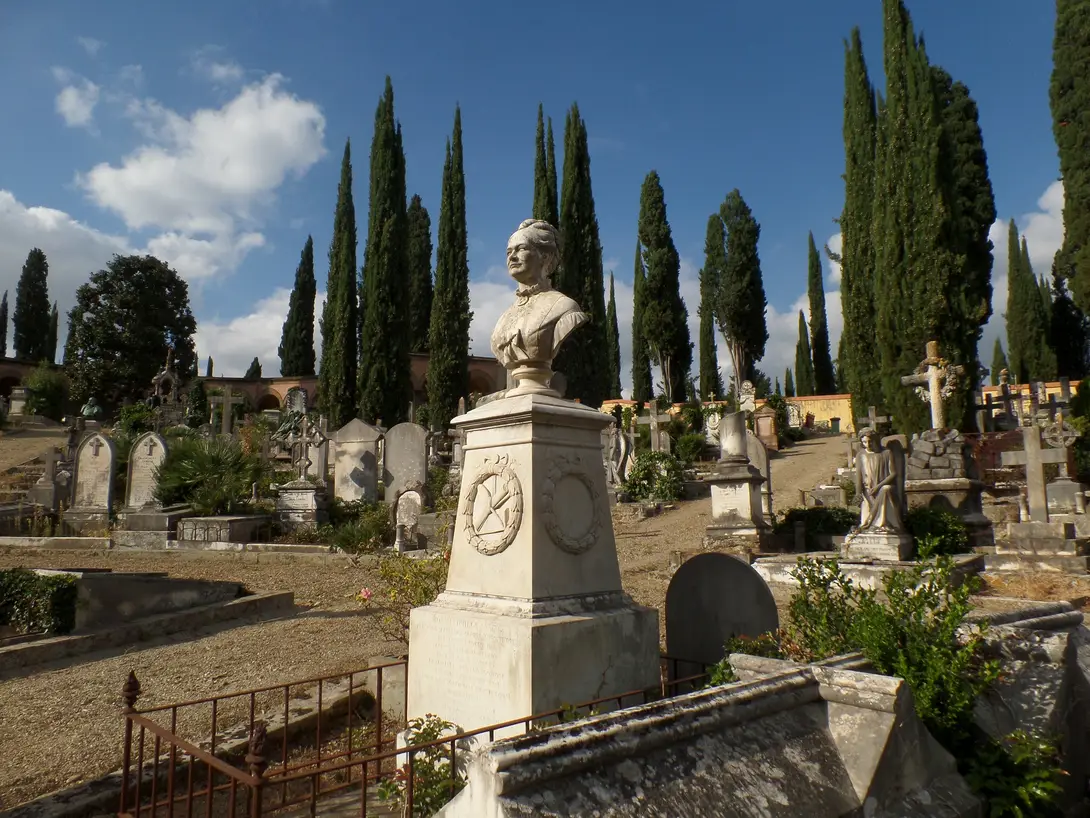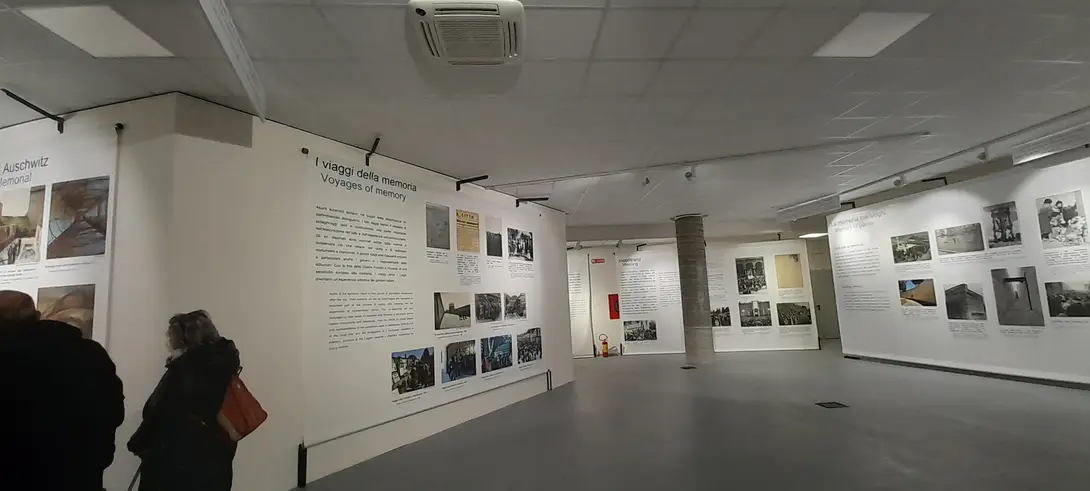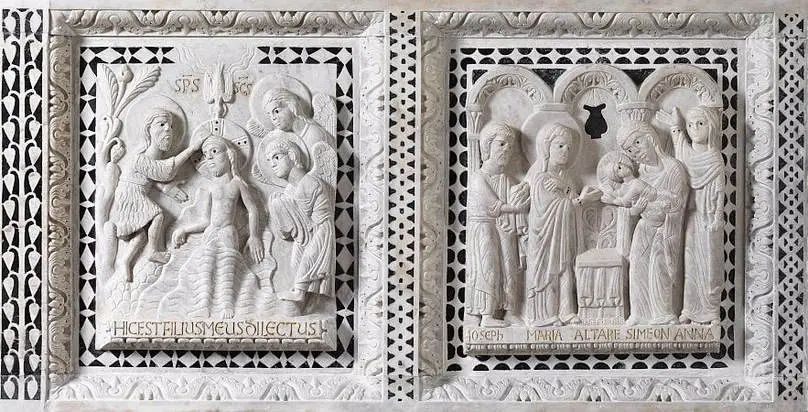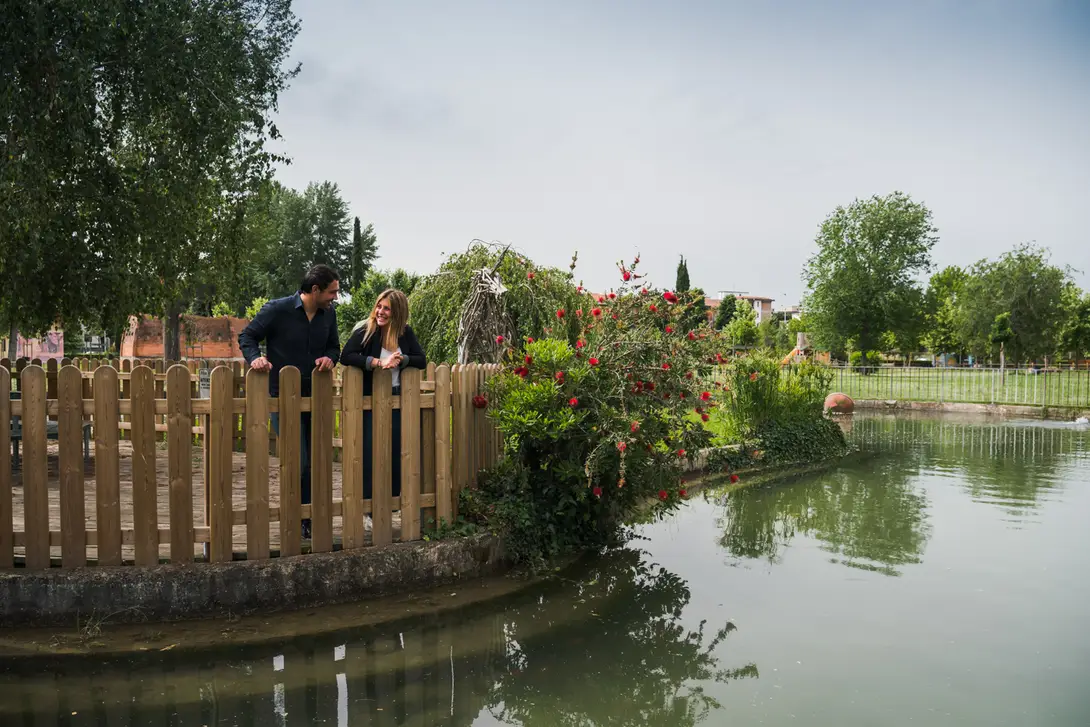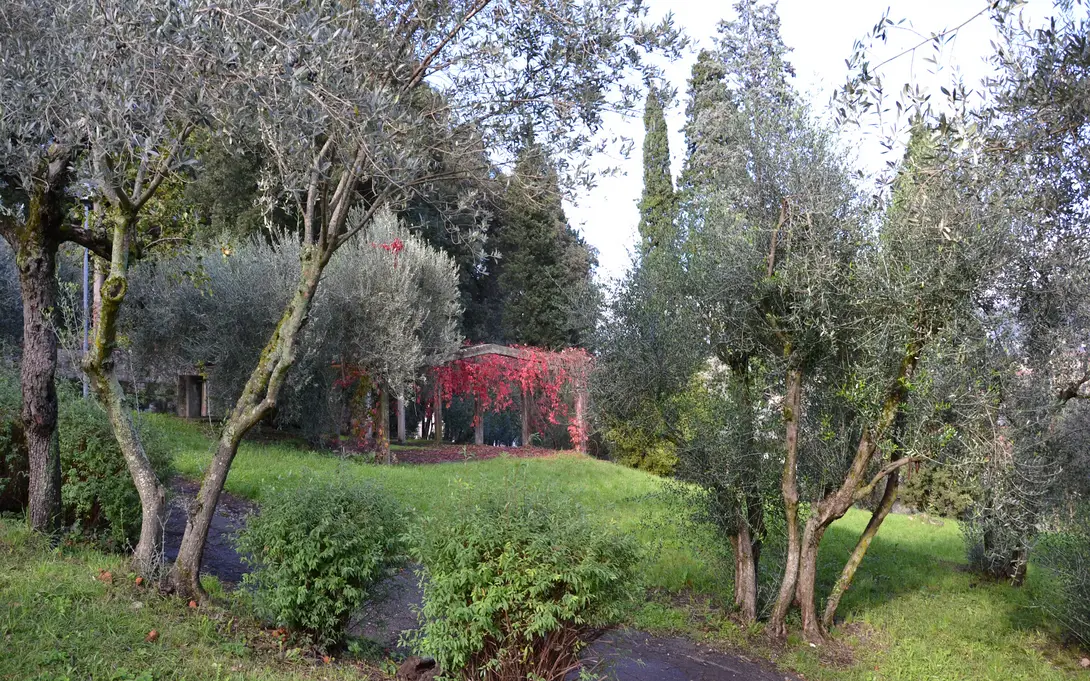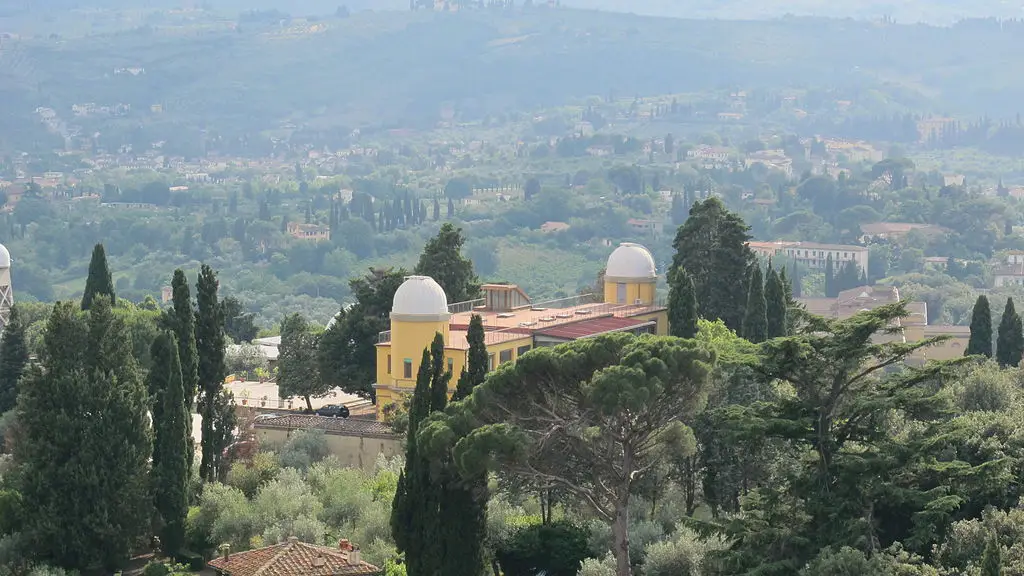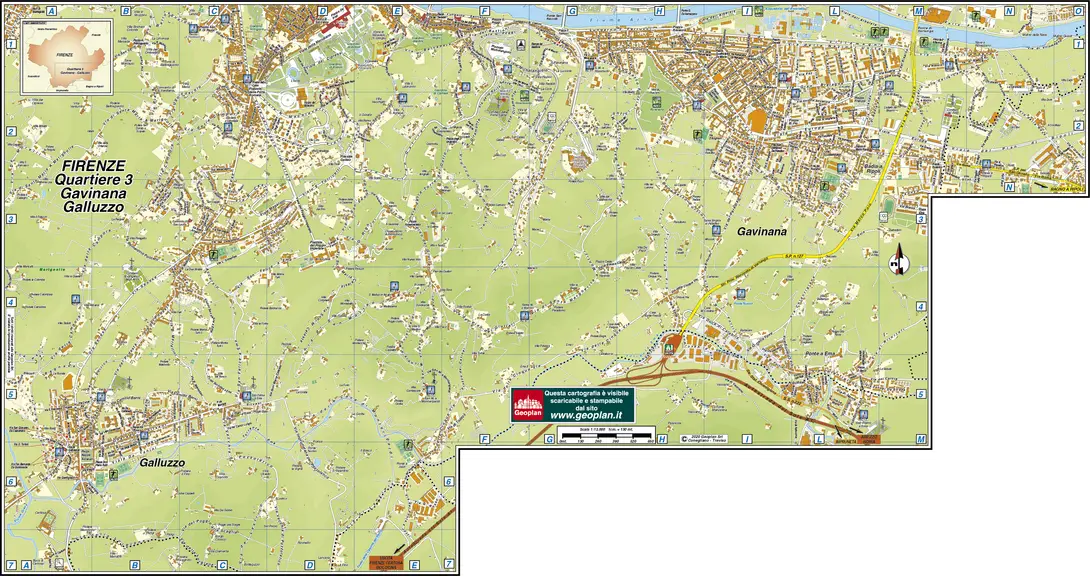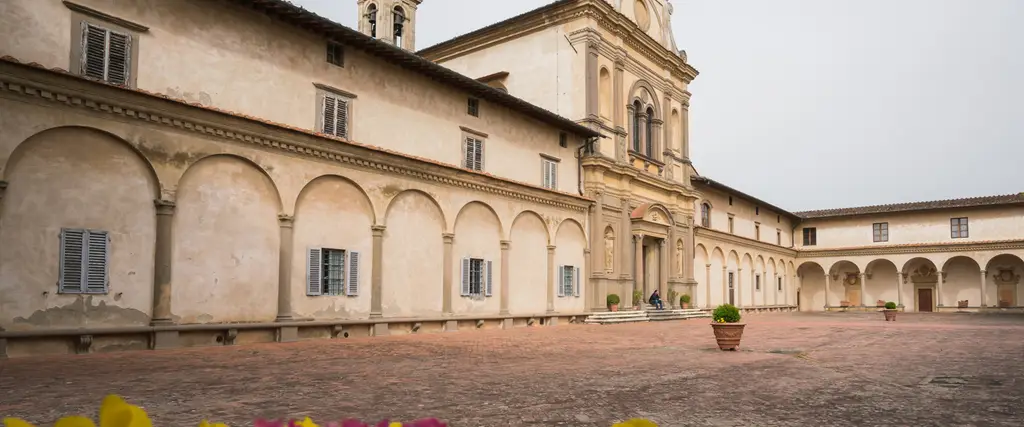
The District of Gavinana and Galluzzo
The District of Gavinana and Galluzzo
This district extends to the South-East of the city, particularly rich in green areas around villages and agglomerations, such as Galluzzo and Gavinana and also Ponte a Ema, Nave a Rovezzano, Cascine del Riccio. Due to its position, on the border with the municipalities of Impruneta, Scandicci and Bagno a Ripoli, this district is considered the gateway to Chianti region.
Hills and art
The charming hilly area has beautiful walking routes and unique places like Pian de' Giullari and Arcetri. Villa il Gioiello, in Arcetri, hosted Galileo Galilei during the last years of his life, while the Astrophysical Observatory is located not so far from the villa; the area is dominated by the ancient Torre del Gallo and Villa la Gallina, frescoed by Antonio del Pollaiolo.
The district is rich in ancient religious settlements, such as the Church of San Leonardo in Arcetri, Santa Margherita in Montici, the Badia di San Bartolomeo in Ripoli and the nearby San Pietro in Palco, San Michele in Monteripaldi, Santa Maria in Ricorboli (the latter preserves a Madonna and Child attributed to Giotto). The magnificent complex of Certosa del Galluzzo, located on a hill, is also worth visiting to see masterpieces like the cycle of Christ’s Passion frescoed by Pontormo. It is possible to admire other valuable fourteenth-century frescoes inside the church of Santa Brigida al Paradiso: the church and the adjacent villa were originally part of the famous complex "Paradiso degli Alberti”.
A residential neighbourhood, dotted with splendid villas, develops on viale dei Colli, Pian de' Giullari, Arcetri and Marignolle. Villa Longhi is situated along the steep via Fortini, not far from viale Michelangelo, once inhabited by the famous art historian and now site of the Art History Foundation named after him. Roberto Longhi and other personalities belonging to the cultural world are buried in the Monumental Cemetery “Agli Allori”, in via Senese, also part of this district.
Parks
The Anconella park, with its wide green lawns for adults and kids, is locatedalong the left bank of the Arno river, where the Florentine water treatment plants are located; in the same park, it is possible to find a model of Brunelleschi's Dome, on a scale of 1:5, made following the same construction techniques of that time.
Not to be missed is the park of Villa di Rusciano whose construction was started in the fourteenth century. The Memorial of Deportations is another place of interest, opened in Gavinana at the “Ex3 Centre”: a work of contemporary art - once located in the former extermination camp - found here a proper venue.
For cycling enthusiasts, a must-see is Ponte a Ema, a small village bordering with Bagno a Ripoli, where the great champion Gino Bartali was born and lived. Don’t miss the new Cycling Museum dedicated to him.
Watch a video about District 3.
Another version of the same video with the audio description translated in LIS (Italian Sign Language) is available here!
Comune di Firenze
The places
Stages
Certosa del Galluzzo
Large monastic complex founded in 1342 by the Florentine banker Niccolò Acciaioli, which stands on a hill a few kilometers south of Florence. The complex underwent major remodelling at the end of the fifteenth century (cloisters) and the sixteenth century (church and square in front), in 1957 it passed from the Carthusians to the Cistercians and in2017 to San LeolinoCommunity, composed by lay and religious people, who work for the spiritual and cultural promotion of the Monastery.
In addition to the Church of San Lorenzo, the visit includes the big cloister (overlooked by the 18 cells of the monks), the chapter house, the refectory, the guesthouse. In the art gallery you can admire the lunettes depicting the Passion of Christ frescoed by Pontormo in 1523.
Museo del Ciclismo Gino Bartali
The cycling museum dedicated to the Tuscan championGino Bartali, is located in Ponte a Ema, the village close to Florence where the great cyclist was born and started his career. It is athree-storey buildingwith an expanse of more than 1.000 square meters.
Bicycles from various periods are stored in the basement floor to show their technical evolution, while the actual museum is set on the first floor, with a variety of velocipedes, bicycles, clothes and relics, documenting the history of cycling and Gino Bartali’s, as well as other champions’, deeds. The museum also houses several newspapers and film clips of the period.
It's very interesting for all children who love cycling or want to learn about the history of bicycle.
Evangelical Cemetery "Agli Allori"
The Allori Cemetery is an extraordinary place where you have the opportunity to feel art and history.
Inaugurated in 1878, the Cemetery was created to give a proper burial to non-Catholics not welcomed by the city cemeteries. Since 1970 it has been open to all religions and lay people.
There are numerous characters who rest in this monumental cemetery, which can be considered a real open-air museum: from Frederick Stibbert, a well-known art collector, to the Italian writer Oriana Fallaci.
Memoriale delle Deportazioni
The Italian Memorial was wanted, designed and placed in Block 21 of the Auschwitz camp by the Anned (National Association of ex-deportees in the Nazi camps) thanks to the collaboration of an exceptional group of intellectuals among whom the names of the architects Lodovico and Alberico Belgiojoso stood out, by the writer Primo Levi, by the film director Nelo Risi, by the painter PupinoSamonà and by the composer Luigi Nono who produced one of the first multimedia installations in the world.
Set up in Auschwitz in 1979 and inaugurated the following spring, dismantled in 2014, it found its location in Florence in EX3. Aned took charge of designing and creating a first exhibition on the history of the memory of the Italian deportation over the decades, which is now visible on the ground floor of the structure.
Chiesa di San Leonardo in Arcetri
Romanesque church. It contains a marbel pulpit of the XII century, decorated with black and white marble. The legend says that Dante and Boccaccio spoke from this pulpit.
Parco dell'Anconella
The Anconella park, with its wide green areas for adults and kids, is locatedalong the left bank of the Arno River;where the Florentine aqueduct is situated; moreover, it is possible to find a model of Brunelleschi's Dome, on a scale of 1:5, made according to the same construction techniques of that time.
Parco Villa di Rusciano
Villa Rusciano Park is located on a hill, known as Poggio di Rusciano, and covers a huge green area of more than 50.000 square meters, surrounding the homonymous villa. It is a privileged place to enjoy breath-taking views of Florence. In fact, at end of the past century, the park was restored and a belvedere was built, with a beautiful path starting from the villa and climbing through the century-old park to the top view. The park is also equipped with a dog area and an outdoor gym.
Arcetri Astrophysical Observatory
The Arcetri Astrophysical Observatory is a public centre for scientific research, which is part of the National Institute for Astrophysics INAF.
Research activities are developed in cooperation with the Department of Astronomy of the University of Florence and range from the studies on our Sun and the Solar System to the star clusters of our galaxy; from nearby galaxies to the limits of the observable universe.
Moreover, at the Observatory, there are active experimental groups, which developtechnologies for the realization of the largest optical and infrared telescopes and of advanced optical instrumentation for visible wavelengths, infrared and radio.
The museum organizes guided tours, sky observations and workshops for children and families.


